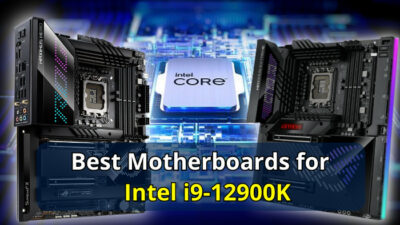The M.2 slot is a new form factor that allows you to use an SSD on your computer. In fact, it’s so new that many computers only have two slots for it. So, which one should you use?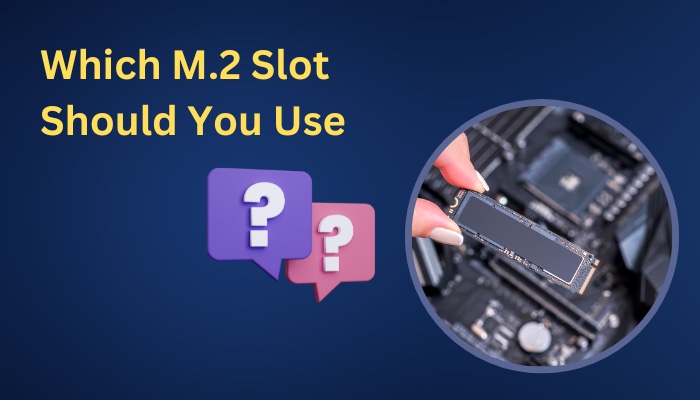 Fortunately, you have arrived at the right place. In this article, I will explain which m.2 slots you should use first and why.
Fortunately, you have arrived at the right place. In this article, I will explain which m.2 slots you should use first and why.
Tag Along!
Which M.2 Slot Should You Use First?
First, you must use the NVMe-compatible M.2 slot, which supports high-speed M.2 NVMe SSDs. With the combination of an NVMe SSD and a compatible M.2 slot, you will get the fastest speed from a storage device. If you use a 4.0 SSD in a 3.0 slot, the speed will be limited to 3.0.
First, check the specifications of your motherboard on their official website to see how many m.2 slots it has and what sort of SSD it supports.
For example, my motherboard is an Asus ROG STRIX B460-H GAMING. When I searched for the model of my motherboard on the internet, I found my motherboard’s specification on the Asus official website. According to the specifications, my motherboard supports two M.2 slots. 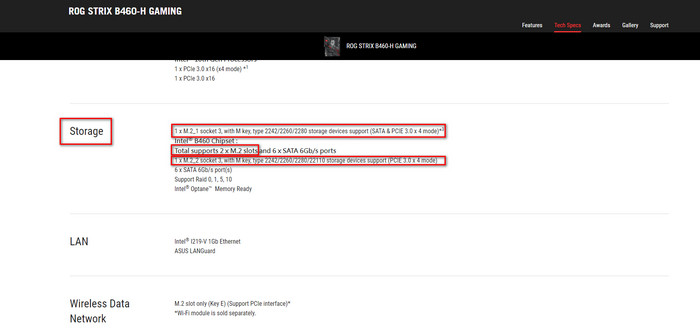 However, compared to NVMe/PCIe, PCIe/SATA bandwidth is substantially slower. Therefore, if you have a high-speed SSD at your disposal, you must install it in the NVMe / PCIe M.2 slots.
However, compared to NVMe/PCIe, PCIe/SATA bandwidth is substantially slower. Therefore, if you have a high-speed SSD at your disposal, you must install it in the NVMe / PCIe M.2 slots.
Also, check out our expert’s recommended fastest PCIE 4.0 SSDs.
You might ask if you can use multiple M.2 slots at the same time. The answer is simple. You can use many M.2 slots. However, there are some limitations.
The limitation is that the second M.2 slot is transformed into PCI lanes on a few motherboards. This means that when the second M.2 slot is in use, neither the third nor the fourth PCI express lanes can be utilized.
So If a user installs an SSD in the second M.2 slot while using the third or fourth PCI channel, their hardware operation will be interrupted. 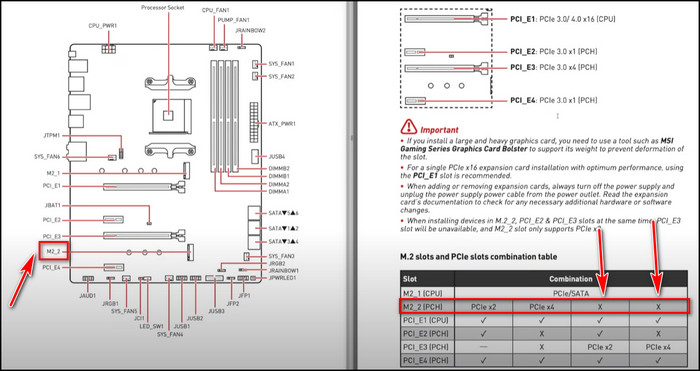 So, the straightforward response is to install your NVMe SSD into your motherboard’s first M.2 slot if you have one. Utilizing the first M.2 slot will allow you to utilize the third and fourth PCI lanes as well as the full speed of your storage device.
So, the straightforward response is to install your NVMe SSD into your motherboard’s first M.2 slot if you have one. Utilizing the first M.2 slot will allow you to utilize the third and fourth PCI lanes as well as the full speed of your storage device.
Follow our guide step-by-step to fix M.2 SSD not showing up in BIOS.
Does It Matter Which M.2 Slots I Use?
Yes, the M.2 slots you use matters because if you use a slower SSD in a faster M.2 slot, you will not get the maximum speed from your storage. So, before you can decide which slot to use, you must first determine how many m.2 slots your motherboard has and at what speed they run.
The other thing is, you must know is which SSD you will be utilizing because the SSD type will determine which m.2 slots the SSD will use. If you have an NVMe SSD, you need to use the NVMe / PCIe; otherwise, use any slots for SATA SSD.
Some Motherboards have two M.2 slots, and each of these slots can support a different kind of SSD. Although you have two SSD slots, it does not imply that they are operating at the same speed. Therefore, before installing an SSD into an M.2 slot, you must be aware of the form factor and speed that the specific M.2 supports.
While some M.2 slots support NVMe / PCIe bandwidth, some support PCIe / SATA bandwidth. In that case, if you have an NVMe SSD, you can install it in the first M.2 slot of your motherboard because the majority of them support NVMe / PCIe bandwidth. 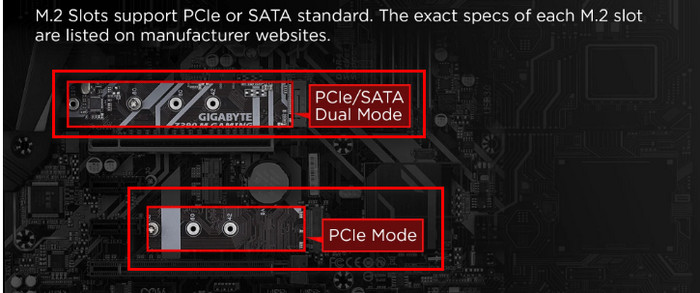 Also check our exclusive tutorial on can SSD improve FPS.
Also check our exclusive tutorial on can SSD improve FPS.
FAQs
Which m 2 slot is the fastest?
The PCIe Gen 4 slots are the quickest m 2 slots available. They offer sequential read rates of up to 7000 MB/s.
Are all m 2 slots the same?
No, not all M.2 slots are the same because M.2 is designed to be utilized with a wide range of products. Despite having several very similar-looking ports, all of the M.2 slots are different.
What are the 3 types of m2 slots?
M.2 SSDs are commonly classified into three types, which can be derived from the device name 2242, 2260, and 2280.
Is m 2 and NVMe m 2 the same?
No, M. 2 and NVMe are not exactly the same, but they function alongside. The SSD modular design is M. 2, and the connection that links it to the motherboard is NVMe.
Is m2 faster than PCIe?
If the M.2 is designated as SATA, PCI is quicker than M.2. SATA 3.0 has a maximum speed of 600MB/s, but PCIe Gen 2 x2 lanes can reach 1000MB/s, Gen 2 x4 lanes can reach 2000MB/s, and Gen 3 x4 lanes can reach 4000MB/s.
Conclusion
The key to getting the most out of the storage device is to use the correct M.2 slots on your motherboard. However, it can be difficult for users to determine which M.2 slots to use.
So, in this article, I’ve demonstrated which M.2 slot users should utilize based on their SSD form factor and motherboard model.
If you have any questions or feedback about this topic, feel free to comment below.

